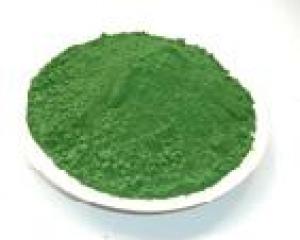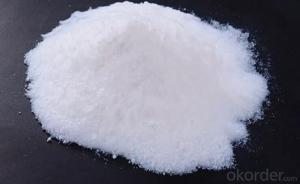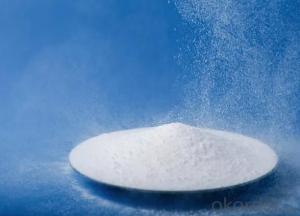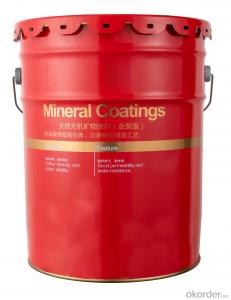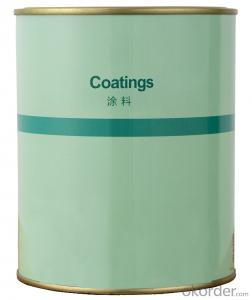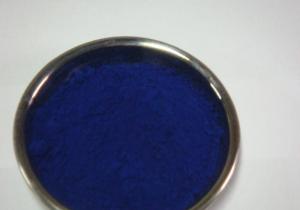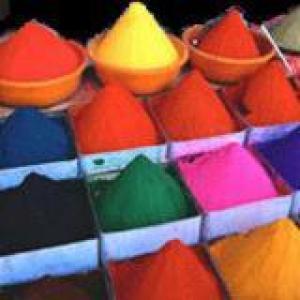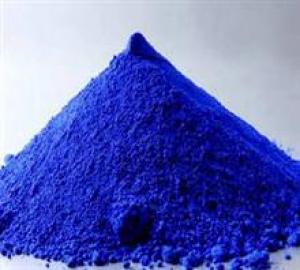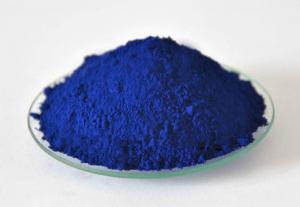Inorganic Green Pigments Chrome Oxide Green Abrasive Grade
- Loading Port:
- China Main Port
- Payment Terms:
- TT or LC
- Min Order Qty:
- 1 Metric Ton m.t.
- Supply Capability:
- 8000MT Per Year m.t./month
OKorder Service Pledge
OKorder Financial Service
You Might Also Like
Production Details Of Chrome Oxide Green :
1. Product Name: Chrome Oxide Green
2. Molecular Formula: Cr2O3
3. HS Code: 2819900000
4. CAS No. : 1308-38-9
5. Appearance: green powder
6. Specifications: (Quality Standard: HG/T 2775-1996)
Packing Details Of Chrome Oxide Green :
25 kg/ pp bag , or kraft bag or as your requirements .
Usage Of Chrome Oxide Green Powder :
Mainly used in paint, glass, ceramics, building materials colorants, printing ink, metal polishing, smelting metal chromium, fire-proof material, etc.
TDS of Chrome Oxide Green
Grade | OXA-0 | OXA-1 | OXA-2 |
Appearance | Green Power | ||
Cr2O3/% ≥ | 99 | 99 | 98 |
Moisture/% ≤ | 0.15 | 0.15 | 0.15 |
Water Soluble/% ≤ | 0.2 | 0.2 | 0.5 |
Polishing Force/[mg/(min.cm2)] ≥ | 0.2 | 0.1 | 0.3 |
Polished Surface Roughness/μm ≤ | 0.100 | 0.20 | 0.80 |
Note: At present in China, the abrasive standard without grinding performance standards, which cannot be grinding and polishing performance evaluation. But according to your needs or our experience to agreed.
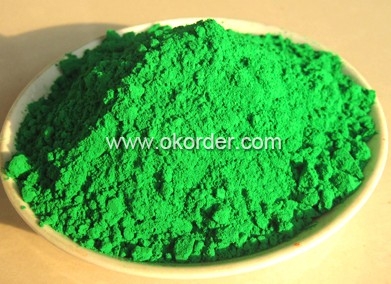
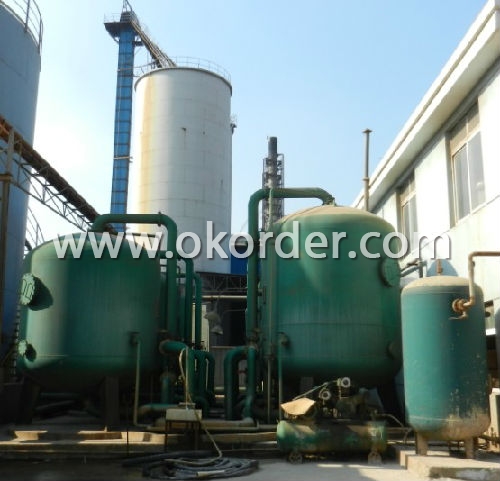

- Q:What does the word pigment mean?
- ? PIGMENT (noun) The noun PIGMENT has 1 sense: 1. dry coloring matter (especially a powder to be mixed with a liquid to produce paint etc) Familiarity information: PIGMENT used as a noun is very rare. ? PIGMENT (verb) The verb PIGMENT has 2 senses: 1. acquire pigment; become colored or imbued 2. color or dye with a pigment Familiarity information: PIGMENT used as a verb is rare.
- Q:what are the differences between colorfast and non colorfast pigments?
- I'm sure with enough research you will be able to find these answers and explanations in your text book. Or google them, maybe it will have pics to help describe if your more of a hands on learner. Good Luck.
- Q:(Explain what happens when a pigment molecule is struck by electromagnetic radiation in the visible light spectrum.)
- pigments are molecules that absorb electromagnetic radiation. For example, the chlorophyll pigment in plants absorbs blue and red light, which is why they reflect green light (since green is the color not absorbed). Another example is melanin, which is the pigment that darkens the skin of people. Melanin absorbs UV to protect the skin. A pigment molecule struck by EM radiation in the visible region may absorb some of the light depending on what pigment it is.
- Q:I am 33 years old and have pigment dispersion syndrome. My new doctor prescribed laser treatment, to prevent eye damage and potential sight loss. A previous doctor said to try drops, but only if my eye pressure became high-risk. Has anyone in Yahoo's network been in my situation and if so, what did you do?
- Rubbing eyes probably does not relate to pigmentary dispersion syndrome. While pigmantary dispersion syndrome can cause pigmentary glaucoma. Most glaucoma is not pigmantary glaucoma.
- Q:i need pigment in powdered form and i need it to be oil based for my resin project. i was thinking about just crushing up artist oil pastels but i need it to be really fine with no chunks. sooo, i was wondering if anyone sells really fine oil based art pigment powders in a variety of colors. or do you know of i way i could crush up the pastels super fine so it will mix evenly into the resin? (i hope this made sence, i don't know much about art lol)thanks!!!:)
- Hi. okorder /... Those are all pure pigments, no hues or imitations. The prices may seem high, but even a half a pound of pigment is a huge amount. Prices I've seen on other sites are higher. I do not think it will work to crush up pastels, oil or otherwise, because they already have a binder and probably a lot of filler in them -- you will get a very weak color. Hope this helps.
- Q:Explain light activation of pigments (absorption of light by pigments)?
- A pigment is a substance that imparts color by absorbing some frequencies of visible light but not others. For instance, there are a lot of substances that absorb ultraviolet light into the visible spectrum, in other words they also absorb plain violet light. Since they absorb violet light but reflect back the rest of light, they appear yellow. Purple pigments, on the other hand, are quite rare because they absorb purple light (which has the highest energy of visible light) and reflect back everything else. When anything absorbs a photon of electromagnetic radiation (light, x-rays, ultraviolet, infrared, microwaves, gamma rays, radio waves), it is activated which means that it takes the energy of the photon and goes to an energy state that is higher by the same amount of energy that was in the photon. At the molecular level, energy is quantized, meaning its restricted to particular states. For instance, vibrational energy corresponds to infrared light: there are only certain ways, called modes, that a molecule can vibrate in, if it can't vibrate in an appropriate mode, it can't absorb the infrared radiation that corresponds to being promoted to that mode. That's why substances can be transparent. At the higher energy state, the substance might be able to participate in chemical reactions that it would not be able to participate in in a lower state. That's usually what is meant by light activation. So a pigment that absorbs visible or UV light might become activated and react with something or react in ways that it wouldn't be able to in the dark.
- Q:Can somebody answer this in AP BIO language please
- A pigment molecule absorbs at specific wavelength(s), meaning that when light of a specific wavelength is incident to the molecule only certain wavelengths are absorbed while others are transmitted. The spectrophotometer emits monochromatic light (light of only one wavelength) which passes through the pigment molecule and a detector determines the amount of light that is either absorbed or transmitted by the sample. This is done at wavelengths from the UV (180-330 nm) to the visible (330-700 nm) and the light that is either transmitted or absorbed is detected by the spectrophotometer and is able to be graphed with absorbance representing the y-axis and wavelength representing the x-axis. The resultant graph will depict the absorption spectrum of that particular pigment molecule. Hope that helps.
- Q:(After the fifteenth century)
- Pigment is color in powder form. An example is lamp black; it was first made from the soot of kerosene lamps ground fine. Binder is a substance used to hold pigment together and make it adhere; in the previous example, linseed oil would be the binder for the lamp black pigment. Vehicle is a medium acting as a solvent, carrier, or binder for paint; turpentine or mineral spirits would be a vehicle but so would linseed oil as well to help dilute the paint and help it cover a large area. Hope that helps and thanx.
- Q:pretty self-explanatory...
- Pigments help in making food for the plants they also give color to it.Pigments are of different types which give different color to its leaves or fruits.Like mango is green first and then turns yellow coz green pigment is replaced by yellow pigment. Green pigment in most of the fruits is present only till it requires food and is raw.
- Q:If you could explain it to me I would be very happy!
- Accessory pigments are light-absorbing compounds, found in photosynthetic organisms, that work in conjuction with chlorophyll a. They include other forms of this pigment, such as chlorophyll b in green algal and higher plant antennae, while other algae may contain chlorophyll c or d. In addition, there are many non-chlorophyll accessory pigments, such as carotenoids or phycobiliproteins which also absorb light and transfer that light energy to photosystem chlorophylls. Some of these accessory pigments, particularly the carotenoids, also serve to absorb and dissipate excess light energy, or work as antioxidants.
1. Manufacturer Overview |
|
|---|---|
| Location | Liaoning, China |
| Year Established | 1960 |
| Annual Output Value | Above US$ 100 Million |
| Main Markets | 20.00% North America 20.00% South Asia 10.00% Middle East 10.00% North America 10.00% Northern Europe 10.00% South Asia 10.00% Western Europe 5.00% Africa 5.00% Eastern Europe |
| Company Certifications | ISO9001:2000 |
2. Manufacturer Certificates |
|
|---|---|
| a) Certification Name | |
| Range | |
| Reference | |
| Validity Period | |
3. Manufacturer Capability |
|
|---|---|
| a)Trade Capacity | |
| Nearest Port | Dalian Port |
| Export Percentage | 41% - 50% |
| No.of Employees in Trade Department | 10-20 People |
| Language Spoken: | English; Chinese; |
| b)Factory Information | |
| Factory Size: | Above 10,000 square meters |
| No. of Production Lines | Above 6 |
| Contract Manufacturing | design and manufacture service offered. |
| Product Price Range | High; Average |
Send your message to us
Inorganic Green Pigments Chrome Oxide Green Abrasive Grade
- Loading Port:
- China Main Port
- Payment Terms:
- TT or LC
- Min Order Qty:
- 1 Metric Ton m.t.
- Supply Capability:
- 8000MT Per Year m.t./month
OKorder Service Pledge
OKorder Financial Service
Similar products
New products
Hot products
Related keywords
